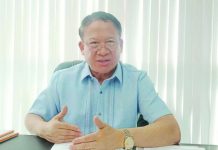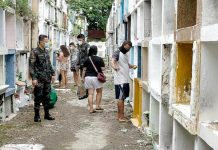
WHILE the national conversation often revolves around a declining birth rate, the more urgent challenge for Western Visayas is the steady rise of its aging population and the fiscal and social pressures this will bring.
According to the Department of Economy, Planning, and Development (DEPDev) as reported by this paper over the weekend, a shrinking workforce paired with more senior citizens depending on state support will strain social protection systems and public resources. Supervising Economic Development Specialist Roxanne Yap put it bluntly: “An aging population and a shrinking workforce can impact fiscal management. With fewer people paying taxes, there will be less funding available to support essential services for the aging population, which we need to provide assistance for.”
Western Visayas is facing a demographic crossroad and this is not an abstract problem. The signs are already visible. Local governments are reporting increasing demand for medical missions, maintenance medicine assistance, and senior citizen benefits. Barangays are pressed to provide stipends, while rural health units face mounting requests for geriatric care. Yet, resources remain thin. Without a deliberate and proactive strategy, these pressures will only intensify in the coming years.
What does preparation look like? The most obvious is investing in healthcare infrastructure — particularly in provincial hospitals and rural health centers; this must be prioritized. These facilities must be equipped not only for acute care but for long-term geriatric services, rehabilitation, and chronic disease management.
Also, social protection systems must evolve. Current benefits under the Expanded Senior Citizens Act, while welcome, are insufficient to meet the real costs of aging. Western Visayas LGUs must innovate — from localized pension supplementation programs to community-based elder care initiatives that reduce dependence on overstretched families.
Of course, we must create age-friendly communities. Housing, transport, and public spaces must adapt to the mobility and accessibility needs of the elderly especially in urban centers. At the same time, rural areas cannot be left behind; as younger people migrate to cities or abroad, many senior citizens are left in villages with little to no support system.
And yes, policy continuity is critical. Programs like Ambisyon Natin 2040 and the Regional Development Plan cannot remain paper promises. Western Visayas needs a long-term demographic management approach that survives beyond electoral cycles and resists political short-termism.
The region has long prided itself on its strong family values. But the coming demographic shift cannot be borne by families alone. It requires bold investments, coordinated policies, and the political will to build a society that does not merely extend life, but ensures that those added years are lived with dignity.







